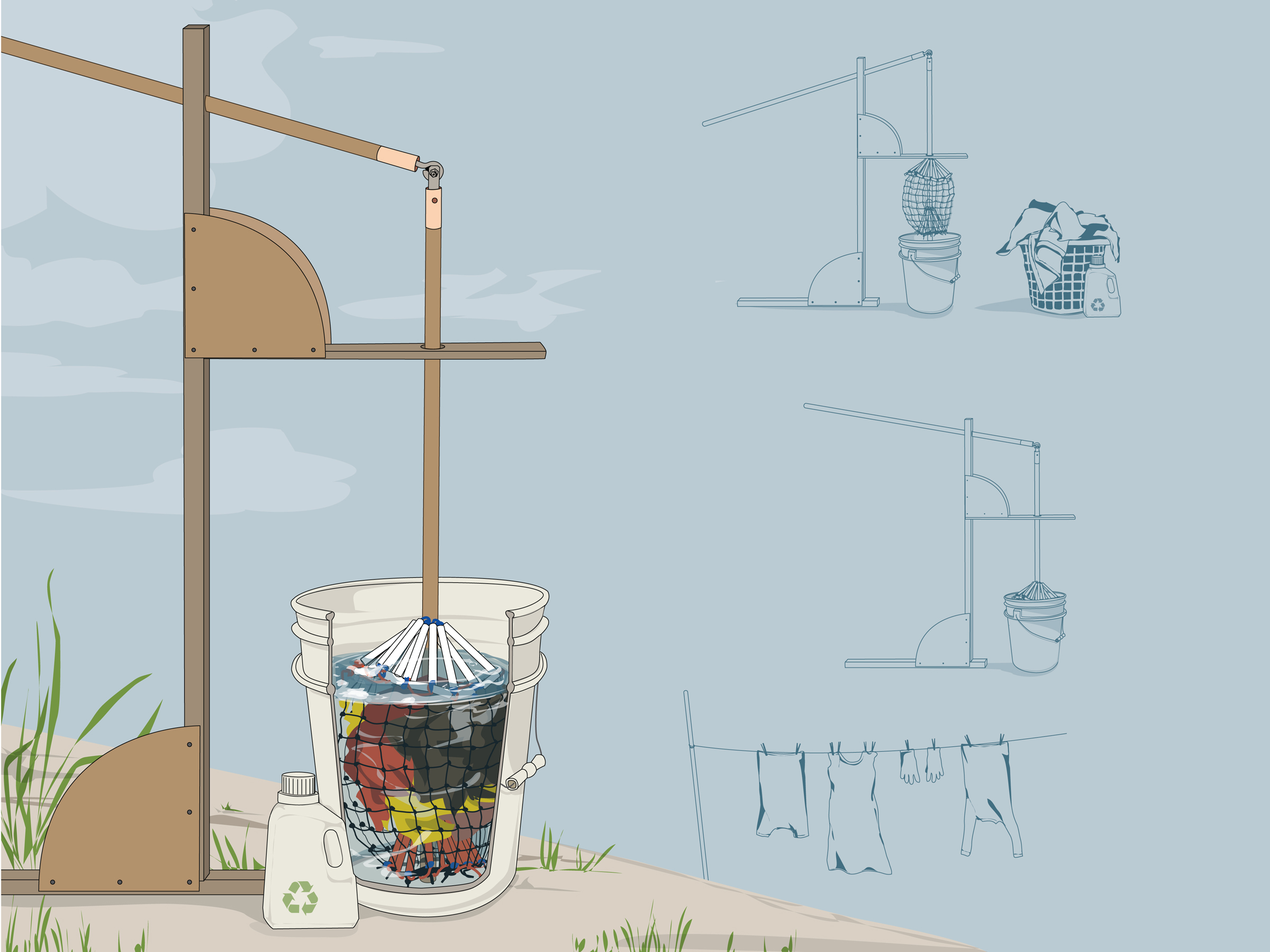A couple of years ago, I decided to concentrate my design research on devices that would be useful to poor families in developing countries — easy-to-make tools that address a specific need without disrupting the local economy, culture, or environment.
Here’s one of my designs: a manual clothes washer that does a load of laundry in about 20 minutes using no power other than muscle. It’s portable, so you can carry or wheel it to a water source, and if you wash with biodegradable soap, the wash water can easily go to a garden afterward.
They’re now using the washer in Hyanja, Nepal, where I collaborated on designing a localized version. It’s also a neat design if you’re living off the grid by choice in an industrialized area, or just conserving water and power.
Inciting Agitation
The washer consists of 3 main components: a container, a net bag, and a lever-driven shaft mechanism held in place by a simple wooden frame.
The key component is the net bag, which is designed to hold, squeeze, and agitate the clothes. The middle of the net bag is a wide, open cylinder of flexible mesh netting. End-capping the cylinder above and below are semi-rigid cones made from short plastic pipes strung together with rope.
Both cones point upward, so the bottom cone sticks up through the clothes and prevents them from balling together.
While the washer is in operation, the top cone holds fast while the bottom cone is pulled up and down by the shaft, carrying the clothes with it.
Each pump of the lever handle pulls the clothes up out of the water, squeezes them out between the nested cones, and releases them back down. The lever’s 40" length provides mechanical advantage for easy operation.
These instructions show how to build a bare-bones device for less than $50 using materials from any home supply store. You can modify the design to suit available materials and your skill level. A machine of this size can handle only small loads up to 5lbs, but the ones we made in Nepal were larger, and I think that one could be made 2 or 3 times larger and would still be easy to operate. I also built a fancier, wooden version that’s towable, with wheels and a barrel-style container.



